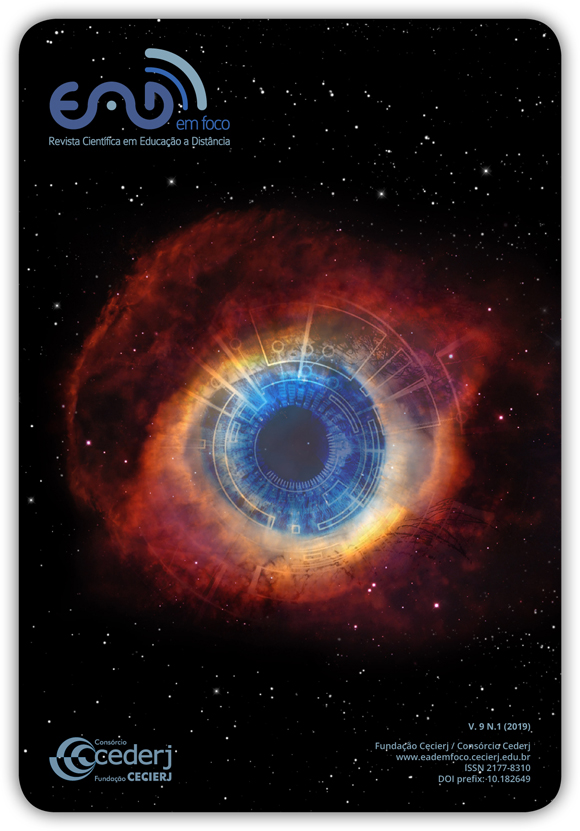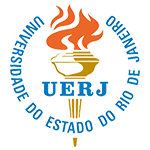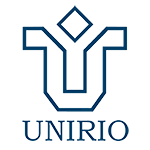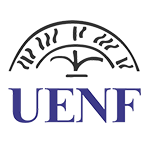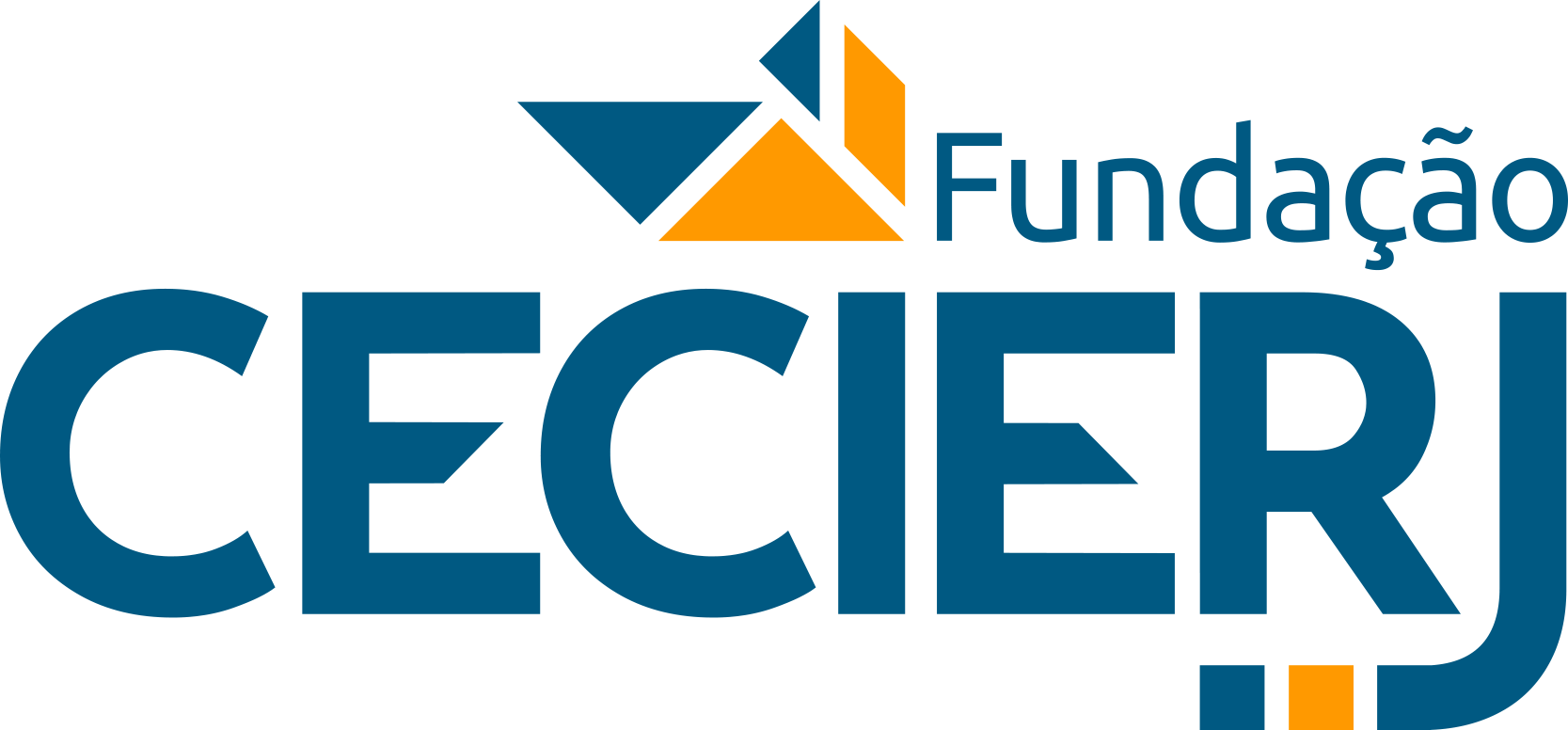Google Classroom as Virtual Learning Environment in Higher Education Hybrid Programs: A Literature Review
DOI:
https://doi.org/10.18264/eadf.v9i1.769Abstract
The current research aimed to show the potential of Google Classroom as a virtual learning environment in higher education hybrid programs. An integrative research review was carried out with quantitative-qualitative approach. The considered time was from 2014 to 2018 and searches were done on databases such as Google Scholar and the Capes Portal of Journals. The results pointed out a growing number of publications on the subject, mainly from 2017, including both theoretical and experimental works, such as experience reports and case studies. It was observed that this tool is being used in different areas such as Law, Mathematics, History and Chemistry, mainly the hybrid learning model flipped classroom. It was concluded that there is a consensus among researchers about the characteristics, skills and abilities required for the use of digital platforms in hybrid education. In addition, there is relevance of these studies in relation to the construction of didactic and pedagogical strategies to orient the teaching and learning process and the organization of adaptive virtual learning environments.
Keywords: Digital culture. Hybrid education. Virtualization of higher education.
Downloads
References
ALLY, M. Foundations of educational theory for on-line learning. In: ANDERSON, T.; ELIOUMI, F. Theory and practice of on-line learning. Athabasca: Athabasca University, 2004. Disponível em: http://cde.athabascau.ca/online_book/pdf/TPOL_book.pdf. Acesso em: 24 set. 2018.
ALVES, A. C.; GUIMARíES, L. M.; PIMENTA, T. S. A utilização de tecnologias de informação e comunicação (TIC) como ferramenta para minimizar os altos índices de retenção e evasão na disciplina de função de uma variável (Cálculo I) NO BCT/UFVJM. In: SIMPÓSIO TECNOLOGIAS E EDUCAÇíO A DIST NCIA NO ENSINO SUPERIOR. Anais... Belo Horizonte: STEDES, 2018. Disponível em: http://revista.uemg.br/index.php/Simposioteceedadistnoenssuperior/article/view/3014. Acesso em: 09 out. 2018.
ARAKAKI, F. F. S.; MENDES, A. A.; OLIVEIRA, L. M. M. M. de. O uso das tecnologias para uma educação autônoma no curso de Direito. In: SIMPÓSIO TECNOLOGIAS E EDUCAÇíO A DIST NCIA NO ENSINO SUPERIOR. Anais... Belo Horizonte: STEDES, 2018. Disponível em: http://revista.uemg.br/index.php/Simposioteceedadistnoenssuperior/article/view/3001/1690. Acesso em: 03 out. 2018.
BACICH, L. Ensino híbrido: proposta de formação de professores para uso integrado das tecnologias digitais nas ações de ensino e aprendizagem. In: VII CONGRESSO BRASILEIRO DE INFORMíTICA NA EDUCAÇíO: WORKSHOP DE INFORMíTICA NA ESCOLA, 5, 2016. Anais... Fortaleza: CBIE/WIE, 2016. p. 679-687. Disponível em: http://www.br-ie.org/pub/index.php/wie/article/view/6875. Acesso em: 20 out. 2018.
______; MORAN, J. Aprender e ensinar com foco na educação híbrida. Revista Pátio, n. 25, p. 45-47, 2015. Disponível em: http://www.grupoa.com.br/revistapatio/artigo/11551/aprender-e-ensinar-com-foco-na-educacao-hibrida.aspx. Acesso em: 09 out. 2018.
______; TANZI NETO, A.; TREVISANI, F. M. Ensino híbrido: personalização e tecnologia na educação. Porto Alegre: Penso, 2015.
BRASIL. MEC. Portaria n°1.428, de 28 de dezembro de 2018. Dispõe sobre a oferta, por instituições de educação superior - IES, de disciplinas na modalidade a distância em cursos de graduação presencial. Diário Oficial da União: seção 1, Brasília, n. 250, p. 59, 31 dez. 2018. Disponível em: http://www.in.gov.br/materia/-/asset_publisher/Kujrw0TZC2Mb/content/id/57496468/do1-2018-12-31-portaria-n-1-428-de-28-de-dezembro-de-2018-57496251. Acesso em: 20 fev. 2019.
CAMILLO, C. M. Blended learning: uma proposta para o ensino híbrido. Revista EaD & Tecnologias Digitais na Educação, v. 5, n. 7, p. 64-74, 2017. Disponível em: https://doi.org/10.30612/eadtde.v5i7.6660. Acesso em: 20 out. 2018.
CALIARI, K. V. Z.; ZILBER, M. A., PEREZ, G. Tecnologias da informação e comunicação como inovação no ensino superior presencial: uma análise das variáveis que influenciam na sua adoção. REGE - Revista de Gestão, v. 24, p. 247-255, 2017. Disponível em: http://dx.doi.org/10.1016/j.rege.2017.05.003. Acesso em: 25 nov. 2018.
CARNEIRO, J. R. S.; LOPES, A. S. B.; CAMPOS NETO, E. B. A utilização do Google Sala de Aula na Educação Básica: uma plataforma pedagógica de apoio í Educação contextualizada. In: VII CONGRESSO BRASILEIRO DE INFORMíTICA NA EDUCAÇíO: WORKSHOP DE INFORMíTICA NA ESCOLA, 7, 2018. Anais... Fortaleza: CBIE/WIE, 2018. p. 401-410. Disponível em: http://www.br-ie.org/pub/index.php/wie/article/view/7909/5608. Acesso em: 20 nov. 2018.
CASTRO, A. B. B. de; MILL, D. Educação híbrida e design instrucional: estudo de caso no Ensino Superior Tecnológico. Revista Diálogo Educacional, v. 18, n. 58, p. 760-778, 2018. Disponível em: http://dx.doi.org/10.7213/1981-416X.18.058.DS08. Acesso em 23 out. 2018.
CERUTTI, E.; MELO, L. F. de. Abordagem híbrida no ensino superior: reflexões teórico-metodológicas. RPGE: Revista on line de Política e Gestão Educacional, v. 21, n. esp. 1, p. 605-620, 2017. Disponível em:
http://dx.doi.org/10.22633/rpge.v21.n.esp1.out.2017.9826. Acesso em 20 out. 2018.
CHRISTENSEN, C.; HORN, M. B.; STAKER, H. Ensino híbrido: uma inovação disruptiva? Uma introdução í teoria dos híbridos. 2013. Disponível em: https://s3.amazonaws.com/porvir/wp-content/uploads/2014/08/PT_Is-K-12-blendedlearning-disruptive-Final.pdf. Acesso em: 19 out. 2018.
DICICCO, K. M. The effects of Google Classroom on teaching social studies for students with learning disabilities. 2016. Dissertação (Master of Arts in Special Education), Rowan University. Nova Jersey, 2016. Disponível em: https://rdw.rowan.edu/cgi/viewcontent.cgi?article=2583&context=etd. Acesso em: 26 out. 2018.
FARIA, E. T. O professor e as novas tecnologias. In: ENRICONE, D. (Org.). Ser professor. 4ª ed. Porto Alegre: EDIPUCRS, 2004. p. 57-72. Disponível em: http://aprendentes.pbworks.com/f/prof_e_a_tecnol_5[1].pdf. Acesso em: 22 out. 2018.
FAVA, R. Educação 3.0: aplicando o PDCA nas instituições de ensino. São Paulo: Saraiva, 2014.
LEANDRO, S. M.; CORRÊA, E. M. Ensino híbrido (blended learning) potencial e desafios no ensino superior. In: CONGRESSO INTERNACIONAL DE EDUCAÇíO E TECNOLOGIAS: ENCONTRO DE PESQUISADORES EM EDUCAÇíO A DIST NCIA, 2018. Anais... São Carlos: CIET-EnPED, 2018. Disponível em: http://cietenped.ufscar.br/submissao/index.php/2018/article/view/24. Acesso em: 28 nov. 2018.
MACIEL, C. Educação a distância: ambientes virtuais de aprendizagem. Cuiabá: EdUFMT, 2013.
MARTINS, L. B.; ZERBINI, T. Educação a distância em instituições de ensino superior: uma revisão de pesquisas. Revista Psicologia: Organizações e Trabalho, v. 14, n. 3, p. 271-282, 2014. Disponível em: http://submission-pepsic.scielo.br/index.php/rpot/index. Acesso em 15 out. 2018.
MENDES, K. D. S.; SILVEIRA, R. C. de C. P.; GALVíO, C. M. Revisão integrativa: método de pesquisa para a incorporação de evidências na saúde e na enfermagem. Texto Contexto Enfermagem, v. 17, n. 4, p. 758-764, 2008. Disponível em: http://dx.doi.org/10.1590/S0104-07072008000400018. Acesso em: 02 out. 2018.
MENDES, S. M. C.; LEME, M. E. G. A mediação pedagógica: formação docente para a educação inclusiva frente í s novas tecnologias. Brazilian Journal of Technology, Communication, and Cogntive Science, v. 2, n. 2, p. 1-12, 2014. Disponível em: http://www.anais.tecccog.net/index.php/anais/article/view/11. Acesso em: 14 out. 2018.
MORAN, J. Educação híbrida: um conceito-chave para a educação, hoje. In: BACICH, L.; TANZI NETO, A.; TREVISANI, F. M. (Orgs.). Ensino híbrido: personalização e tecnologia na educação. Porto Alegre: Penso, 2015.
MOURA, G. M.; SAMí, S. Blended learning potencializando a aprendizagem da estatística no ensino superior. Informática na Educação: Teoria & Prática, v. 20, n. 1, p. 60-70, 2017. Disponível em: https://seer.ufrgs.br/InfEducTeoriaPratica/article/view/70616/41084. Acesso em 12 out. 2018.
NASCIMENTO, A. N. do. O uso das ferramentas do aplicativo Google Sala de Aula no ensino de História. In: SEMINíRIO DEBATES DO TEMPO PRESENTE: DESAFIOS PARA AS HUMANIDADES EM TEMPOS DE CRISE, 2, 2018. Anais... Aracaju: SDTP, 2018. p. 309- 320. Disponível em: https://encuentros.virtualeduca.red/storage/ponencias/bahia2018/hwXpvp9PKp0aNvStoQd6GfA53g5HPqT3y0vpB2nd.pdf. Acesso em: 25 out. 2018.
PEIXOTO, R. T. R. da C.; GONÇALVES, P. V. A. J.; ALVIM, H. H.; AMORIM, H. C. S.; ARAÚJO, A. V. A. O emprego das tecnologias de informação e comunicação no ensino superior: relato de experiência sobre a oficina Modelo Híbrido de Ensino. Revista Docência do Ensino Superior, v. 5, n. 1, p. 183-204, 2015. Disponível em: https://seer.ufmg.br/index.php/rdes/article/view/917/710. Acesso em: 14 out. 2018.
PEREIRA, K. L.; M?NCHEN, G. Uso das tecnologias da informação e comunicação na educação de jovens e adultos. In: CONGRESSO INTERNACIONAL DE EDUCAÇíO E TECNOLOGIAS: ENCONTRO DE PESQUISADORES EM EDUCAÇíO A DIST NCIA, 2018. Anais... São Carlos: CIET-EnPED, 2018. Disponível em: http://cietenped.ufscar.br/submissao/index.php/2018/article/view/307. Acesso em: 03 nov. 2018.
REZENDE, Wanderley Moura; DIAS, Ana Isabel de Azevedo Spinola. Educação a distância e ensino presencial: incompatibilidade ou convergência? EaD em foco, v. 1, n. 1, abr. 2010.Disponível em: https://doi.org/10.18264/eadf.v1i1.10. Acesso em: 22 maio 2019.
SANCHO, M.; HERNíNDEZ, F. Tecnologias para transformar a educação. Porto Alegre: Artmed, 2006.
SCHIEHL, E. P.; GASPARINI, I. Contribuições do Google Sala de Aula para o ensino híbrido. Revista Renote: Novas Tecnologias na Educação, v. 14, n. 2, 2016. Disponível em: https://doi.org/10.22456/1679-1916.70684. Acesso em: 02 set. 2018.
______; KEMCZINSKI, A.; GASPARINI, I. As perspectivas de avaliar o estudante no ensino híbrido. Revista Renote: Novas Tecnologias na Educação, v. 15, n. 2, 2017. Disponível em: https://doi.org/10.22456/1679-1916.79280. Acesso em: 07 nov. 2018.
SILVA, E. C. S. da. O Google Sala de Aula como interface de aprendizagem no ensino superior. In: 9° SIMPÓSIO INTERNACIONAL DE EDUCAÇíO E COMUNICAÇíO (9° SIMEDUC), 2018. Anais... Aracaju: 9° SIMEDUC, 2018. Disponível em: https://eventos.set.edu.br/index.php/simeduc/article/viewFile/9572/4164. Acesso em: 07 nov. 2018.
SILVA, G. M. L. da; MAGALHíES NETTO, J. F. de. Um relato de experiência usando Google Sala de Aula para apoio í aprendizagem de Química. In: CONGRESSO BRASILEIRO DE INFORMíTICA NA EDUCAÇíO / WORKSHOP DE INFORMíTICA NA ESCOLA, 7, 2018. Anais... Fortaleza: CBIE/WIE, 2018. Disponível em: http://doi.org/10.5753/cbie.wie.2018.119. Acesso em: 16 nov. 2018. p. 119-128.
SILVA, M. R. C. da; MACIEL, C.; ALONSO, K. M. Hibridização do ensino nos cursos de graduação presenciais das universidades federais: uma análise da regulamentação. RBPAE - Revista Brasileira de Política e Administração da Educação, v. 33, n. 1, p. 95-117, 2017. Disponível em: https://doi.org/10.21573/vol33n12017.74042. Acesso em: 16 nov. 2018.
SILVEIRA, C. R. Metodologia da pesquisa. 2. ed. rev. e atual. Florianópolis: Publicações do IFSC, 2011. Disponível em: http://educapes.capes.gov.br/handle/capes/206318. Acesso em: 05 nov. 2018.
SOUSA JÚNIOR, A.; OLIVEIRA, C.; BRAGA, E.; LIMA, V. A. de. Google Suite for education: trazendo o Google Classroom como uma perspectiva para as salas de aula usando os dispositivos móveis. In: CONGRESSO SOBRE TECNOLOGIAS NA EDUCAÇíO, 2, 2017. Anais... João Pessoa: CTE, 2017. Disponível em: http://ceur-ws.org/Vol-1877/CtrlE2017_AC_11_19.pdf. Acesso em: 3 out. 2018.
SOUZA, M. T. de; SILVA, M. D. da; CARVALHO, R. de. Revisão integrativa: o que é e como fazer? Einstein, v. 8, n. 1, p. 102-106, 2010. Disponível em: http://www.scielo.br/pdf/eins/v8n1/pt_1679-4508-eins-8-1-0102.pdf. Acesso em: 4 set. 2018.
SOUZA, W. C. de; MATTOS, M. C. de. Percepção dos alunos da geração Y sobre o uso de novas tecnologias em ambientes de aprendizagem. Revista FSA, v. 15, n. 6, p. 132-150, 2018. Disponível em: http://dx.doi.org/10.12819/2018.15.6.7. Acesso em: 16 out. 2018.
SPINARDI, J. D.; BOTH, I. J. Blended learning: o ensino híbrido e a avaliação da aprendizagem no ensino superior. Boletim Técnico do Senac, v. 44, n. 1, 2018. Disponível em: http://www.bts.senac.br/index.php/bts/article/view/648. Acesso em: 17 out. 2018.
TEIXEIRA, T. F.; FERREIRA, E. D.; MICHELS, E. Regulamentação da oferta de disciplinas EaD em 20% da carga horária total dos cursos presenciais e a virtualização da educação superior. In: COLÓQUIO INTERNACIONAL DE GESTíO UNIVERSITíRIA, 18, 2018. Anais... Florianópolis: CIGU, 2018. Disponível em: https://repositorio.ufsc.br/bitstream/handle/123456789/190472/101_00121.pdf?sequence=1&isAllowed=y. Acesso em: 28 out. 2018.
TORI, R. Educação sem distância: as tecnologias interativas na redução de distâncias em ensino e aprendizagem. São Paulo: Editora Senac São Paulo, 2010.
VALENTE, J. A. Blended learning e as mudanças no ensino superior: a proposta da sala de aula invertida. Educar em Revista, n. 4, p. 79-97, 2014. Disponível em: http://dx.doi.org/10.1590/0104-4060.38645. Acesso em: 27 out. 2018.
______; ALMEIDA, M. E. B. de; GERALDINI, A. F. S. Metodologias ativas: das concepções í s práticas em distintos níveis de ensino. Revista Diálogos Educacionais, v. 17, n. 52, p. 455-478, 2017. Disponível em: https://periodicos.pucpr.br/index.php/dialogoeducacional/article/view/9900/12386. Acesso em: 30 out. 2018.
WITT, D. Accelerate learning with Google apps for education. 2015. Disponível em: https://danwittwcdsbca.wordpress.com/2015/08/16/accelerate-learning-with-google-apps-for-education/. Acesso em: 8 ago. 2018.
YUEH, H. P.; HSU, S. Designing a learning management systems to support instruction. Communications of the ACM, v. 5, n. 4, p. 59-63, 2008. Disponível em: http://cacm.acm.org/magazines/2008/4/5440-designing-a-learning-management-system-to-support-instruction/abstract. Acesso em: 8 nov. 2018.
Downloads
Published
How to Cite
Issue
Section
License
All articles published in Revista EaD em Foco receive the license
Creative Commons - Atribuição 4.0 Internacional (CC BY 4.0).
All subsequent publications, complete or partial, must be made with the acknowledgment, in citations, of the Revista EaD em Foco as the original editor of the article.

